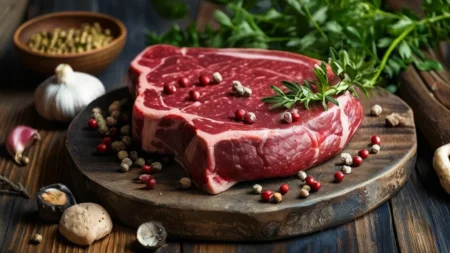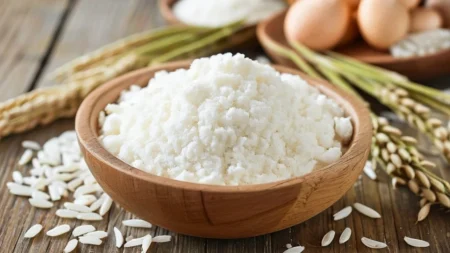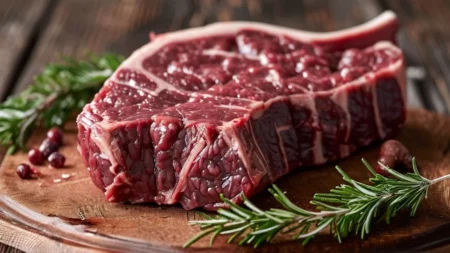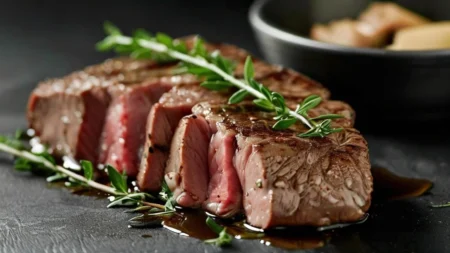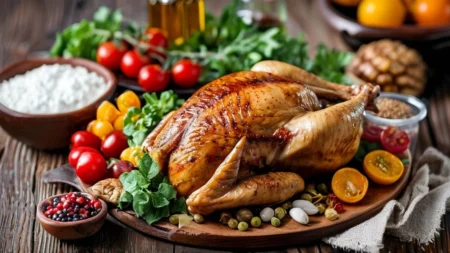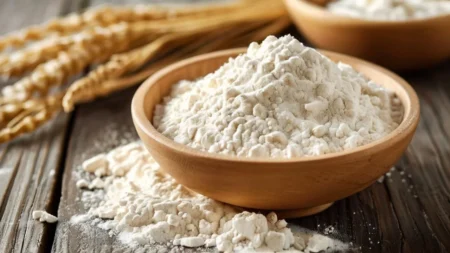Sirloin: A Lean, Nutrient-Packed Cut of Beef
Key Takeaways
- Sirloin is a lean cut of beef known for its rich flavor and versatility.
- It is high in protein, vitamins, and minerals while being relatively low in fat compared to other cuts of beef.
- Regular consumption of lean cuts like sirloin can support muscle growth, boost immune health, and promote heart health when consumed in moderation.
- Cooking methods like grilling, broiling, or pan-searing help retain the nutritional benefits of sirloin while enhancing its natural flavor.
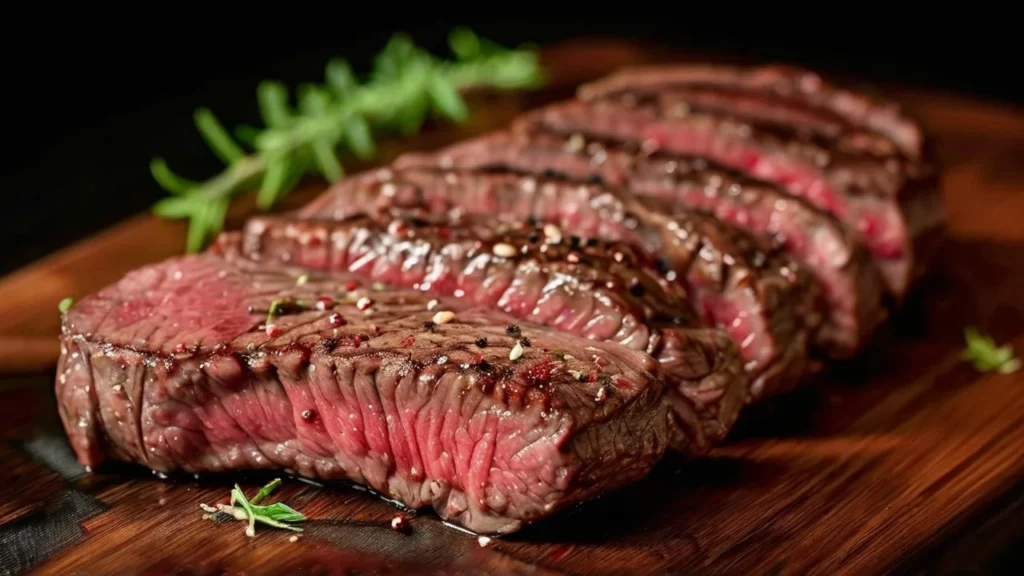
What is Sirloin?
Understanding Sirloin as a Cut of Beef
Sirloin is a popular cut of beef that comes from the rear portion of the cow, specifically from the area between the ribs and the hip. It is divided into two main types: top sirloin and bottom sirloin.
- Top Sirloin: Known for being more tender and flavorful, this cut is often used for grilling or broiling.
- Bottom Sirloin: Slightly tougher, this cut is more commonly used in stews or slow-cooked dishes.
Both types offer high nutritional value and are favored for their relatively lean profile.
Table 1: Comparison of Nutritional Content of Top and Bottom Sirloin (per 100g)
| Cut Type | Calories | Protein (g) | Fat (g) | Iron (% DV) | Vitamin B12 (% DV) |
|---|---|---|---|---|---|
| Top Sirloin | 210 | 23 | 10 | 15 | 54 |
| Bottom Sirloin | 216 | 22 | 12 | 13 | 52 |
Nutritional Profile of Sirloin
Protein Powerhouse
Sirloin is packed with high-quality protein, making it an excellent choice for those looking to build or maintain muscle. Protein is essential for tissue repair, muscle growth, and overall body function.
Vitamins and Minerals
In addition to protein, sirloin provides a range of important vitamins and minerals, including:
- Iron: Crucial for oxygen transport and energy production.
- Vitamin B12: Supports brain health and red blood cell formation.
- Zinc: Plays a vital role in immune function and wound healing.
Lower in Fat
Compared to fattier cuts like ribeye or T-bone, sirloin is relatively low in fat, particularly saturated fat, making it a heart-healthy option when consumed in moderation.
Health Benefits of Eating Sirloin
Muscle Growth and Repair
The high protein content in sirloin supports muscle growth and repair, especially for athletes and those with physically demanding lifestyles. Protein also plays a key role in maintaining lean muscle mass as people age.
- Scientific Insight: A study published in the American Journal of Clinical Nutrition suggests that high-quality protein from lean beef like sirloin helps preserve muscle mass in aging adults.
Heart Health
Choosing lean cuts like sirloin can be beneficial for heart health. Sirloin is lower in saturated fat, which can help reduce cholesterol levels and lower the risk of heart disease.
Immune Support
The zinc found in sirloin plays a critical role in immune system function, helping to fight off infections and support wound healing.
Cooking and Preparation Methods
Best Ways to Cook Sirloin
To get the most out of sirloin in terms of flavor and nutrition, it’s important to use cooking methods that preserve its lean qualities without adding excessive fat.
- Grilling: One of the most popular methods, grilling sirloin brings out its natural flavor and maintains its lean profile.
- Broiling: Using a broiler helps create a crispy crust on the outside while keeping the inside tender.
- Pan-Searing: A quick and effective method to cook sirloin, ensuring the meat stays juicy without excess oil.
List: Simple Tips for Cooking Perfect Sirloin
- Season Lightly: Use salt, pepper, and a dash of garlic powder to enhance the natural flavor.
- Cook to Medium-Rare: For the best texture, aim for an internal temperature of 135°F (medium-rare).
- Rest the Meat: Allow the steak to rest for 5 minutes after cooking to retain its juices.
- Use Lean Oils: If using oil, opt for healthier options like olive or avocado oil.
Common Myths About Sirloin
Myth 1: All Beef is Bad for Heart Health
While processed and fatty cuts of beef can contribute to heart disease, lean cuts like sirloin are lower in fat and can be part of a heart-healthy diet when eaten in moderation.
Myth 2: Beef is Hard to Digest
Though red meat can take longer to digest than other proteins, sirloin’s lean nature and the high-quality protein it provides can be digested efficiently, especially when paired with vegetables and fiber-rich sides.
Conclusion
Sirloin is a lean, nutrient-rich cut of beef that offers a wide range of health benefits, including support for muscle growth, heart health, and immune function. With its relatively low fat content and high protein levels, sirloin can be a versatile and delicious addition to any diet when cooked and enjoyed in moderation. Whether grilled, broiled, or pan-seared, this flavorful cut is sure to satisfy.
FAQ
1. How often should I eat sirloin?
It is generally safe to enjoy lean cuts of beef like sirloin a few times per week as part of a balanced diet.
2. What is the healthiest way to cook sirloin?
Grilling, broiling, or pan-searing without excess oil or butter are among the healthiest cooking methods for sirloin.
3. Is sirloin a good option for weight loss?
Yes, due to its high protein content and relatively low fat levels, sirloin can be an excellent option for those on a weight-loss diet.
4. Can sirloin be part of a heart-healthy diet?
Absolutely. As a lean cut, sirloin is lower in saturated fat, making it a better choice for heart health compared to fattier cuts.
5. How can I tell if sirloin is cooked to the right temperature?
For medium-rare, aim for an internal temperature of 135°F. Use a meat thermometer to ensure accurate cooking.





